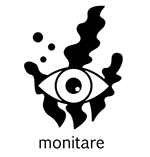About MoniTARE
About MoniTARE

As commercial kelp farms continue to expand in Norway, autonomous methods for monitoring of growth, biomass and biofouling become increasingly important. This project aims to develop optical methods for these purposes.
Seaweed (including kelp) cultivation is one of the fastest growing aquaculture businesses in Norway. It is also one of the most sustainable types of aquaculture, with positive environmental impacts, including nutrient remediation, increased biodiversity, carbon sequestration and positive impacts on local fish stocks.
Commercial kelp farms need to be monitored regularly. During this process, measurements of seaweed biomass, growth and biofouling are taken. These measurements allow predictions to be made about the size and quality of the harvest, which can be used to optimise the biomass of future harvests. Current monitoring methods are labour intensive and inefficient. Automated solutions are, therefore, required as kelp farms continue to grow in scale.
The main aim of this research project is to take some major steps towards automated underwater monitoring of kelp-farms, by using cameras mounted on a remotely operated vehicle (ROV), to estimate macroalgal biomass and biofouling. In parallel, integrated ecological monitoring (plankton and kelp biomass and water quality) will be used by deploying environmental and biological sensors at the farm, which will help us to investigate the physical and biological factors associated with the onset of biofouling organisms in late spring.
This project is part of the Young Research Talent grant and funded by the Norwegian Research Council (Project number 315514). The monitoring and the optical techniques will be refined at a commercial kelp farm, run by Seaweed Solutions, on the island of Frøya in Trøndelag.






